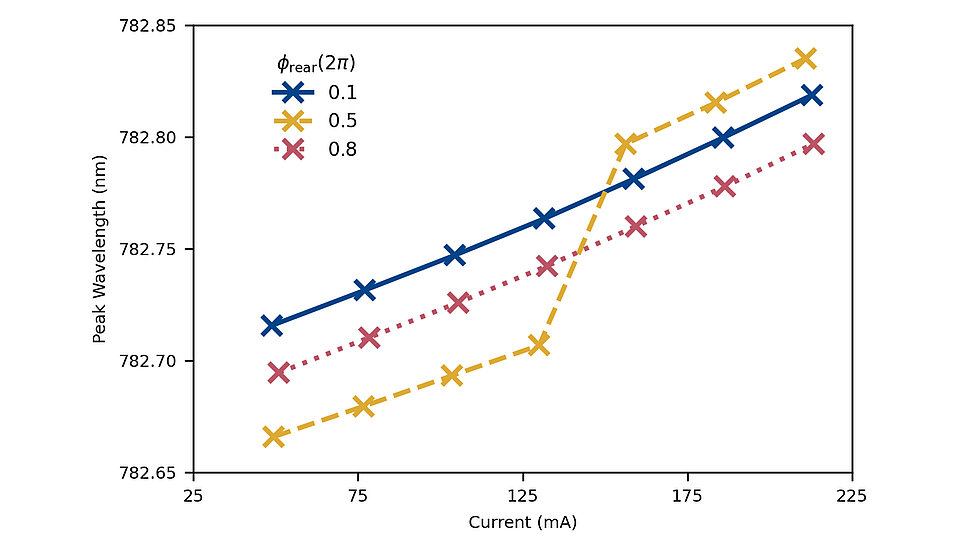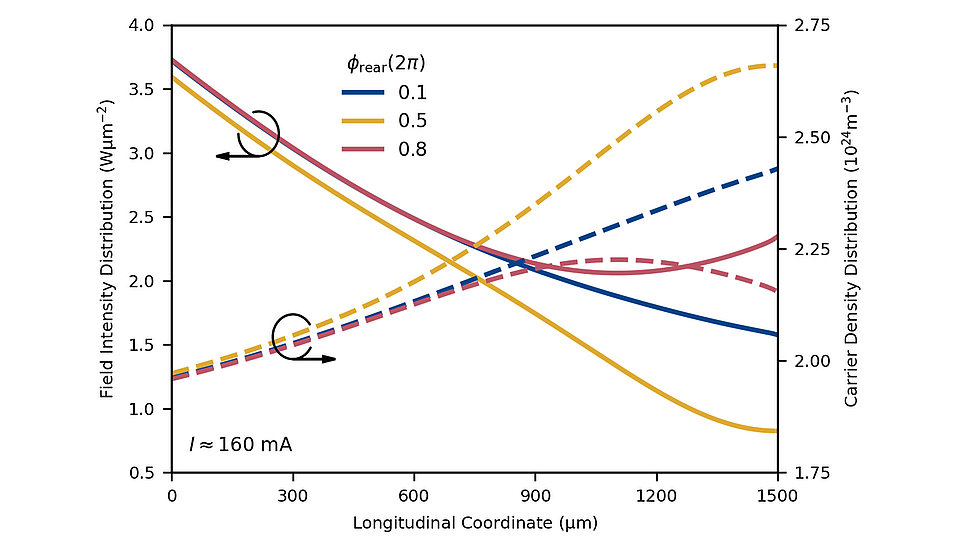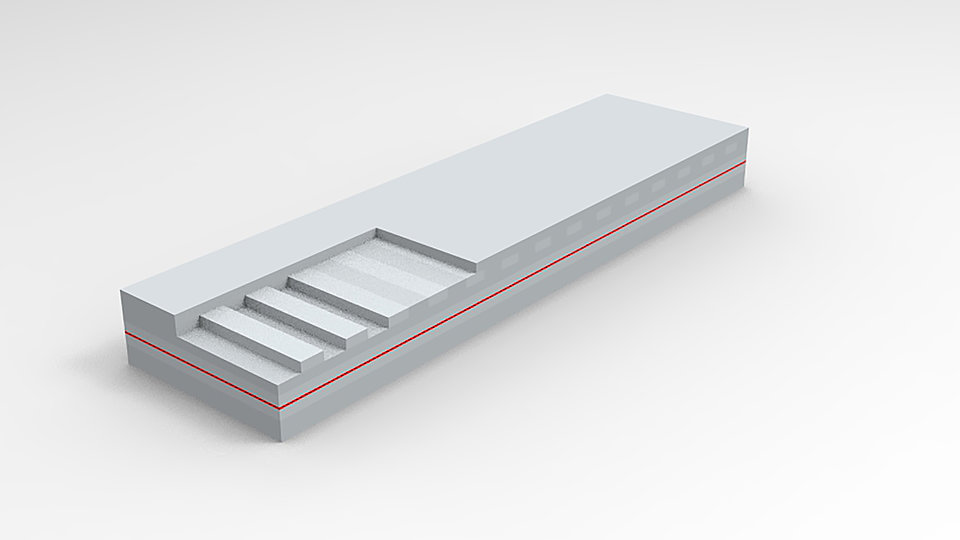High-power DFB lasers: Understanding the spectral behavior above threshold
Fig. 1: Wavelength tuning of high-power DFB lasers by current for different values of the reflection phase at the rear facet showing a mode hop for one device (dashed line) and continuous tuning for the others
Compact and robust single frequency high-power GaAs-based diode lasers are enabling components for several industry-ready sensing, spectroscopy, and quantum technology applications that require widely tunable and highly coherent laser sources. Distributed feedback (DFB) lasers with monolithically integrated Bragg gratings, in principle, offer mode hop free tuning of the wavelength over a wide range of operating conditions and a low spectral linewidth. However, it is known that the tuning behavior depends on the random position of the rear facet with respect to the Bragg grating, modelled as a reflection phase.
Scientists at FBH have investigated the spectral behavior of high-power DFB lasers using numerical simulations. As a result, they found the mechanism for mode hops appearing in some of those devices above threshold [1]. The lasers exhibit a strongly varying intensity distribution in the cavity with a maximum at the anti-reflection coated front facet and a minimum near the high-reflection coated rear facet, influenced by the reflection phase. The associated variations of the carrier density and temperature lead to a modification of the local refractive index. For some critical values of the reflection phase, the refractive index at the rear facet is reduced with increasing injection current, resulting in longitudinal mode hops from the lower to the higher wavelength side of the stop band of the Bragg grating.
The simulations reproduce the experimentally observed spectral behavior of real devices. Beside the better understanding of such lasers, the findings can be used to identify critical devices showing mode hops above laser threshold and widely tunable lasers, respectively, by determining the reflection phase from measurements of the spectra of the amplified spontaneous emission below threshold.
Publications
[2] H. Wenzel, A. Klehr, M. Braun, F. Bugge, G. Erbert, J. Fricke, A. Knauer, P. Ressel, B. Sumpf, M. Weyers and G. Tränkle, “Design and realization of high-power DFB lasers”, Physics and Applications of Optoelectronic Devices, Int. Soc. Opt. Photonics 5594, 110–123 (2004)


